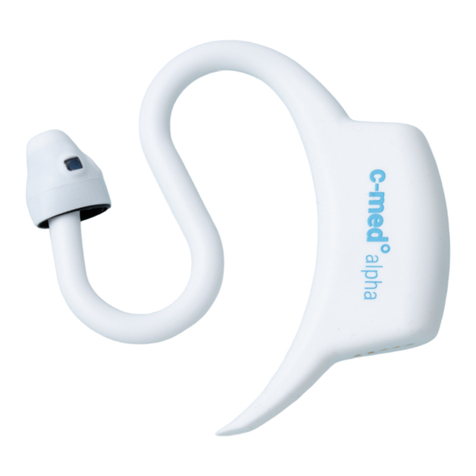
10 Warnings and precautions
Health status
• The use of the c-med° alpha monitoring system cannot
replace the consultation with your doctor�
• The System is intended to be used in hospitals, clinics,
long-term care, and home care environments where the
variations of the measured values could not result in
immediate danger to the patient.
• This product is not suitable for self-diagnosis of diseases
by a lay user�
• Please contact your doctor if you notice symptoms such
as unexplained irritability, vomiting, diarrhea, dehydration,
changes in appetite or activity levels, seizures, muscle
aches, chills, stiffness of the neck, pain when urinating
etc., regardless of the displayed measured vital signs and
regardless of whether or not fever is present.
• Please contact your doctor if the monitored temperature
is elevated for more than two days already.
• Unusually elevated or reduced vital signs may indicate a
severe disease, especially in adults who are older or frail
or have a weakened immune system. Please seek
professional advice immediately from the following
groups at elevated temperatures:




























